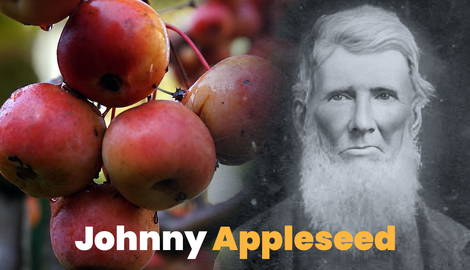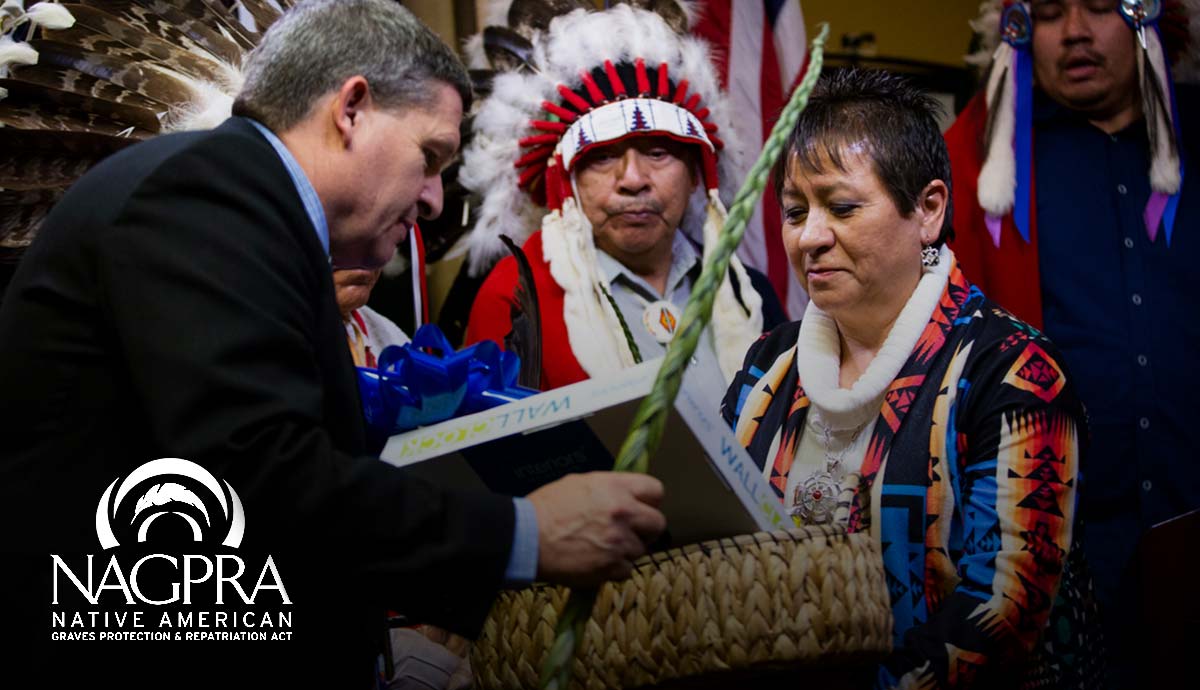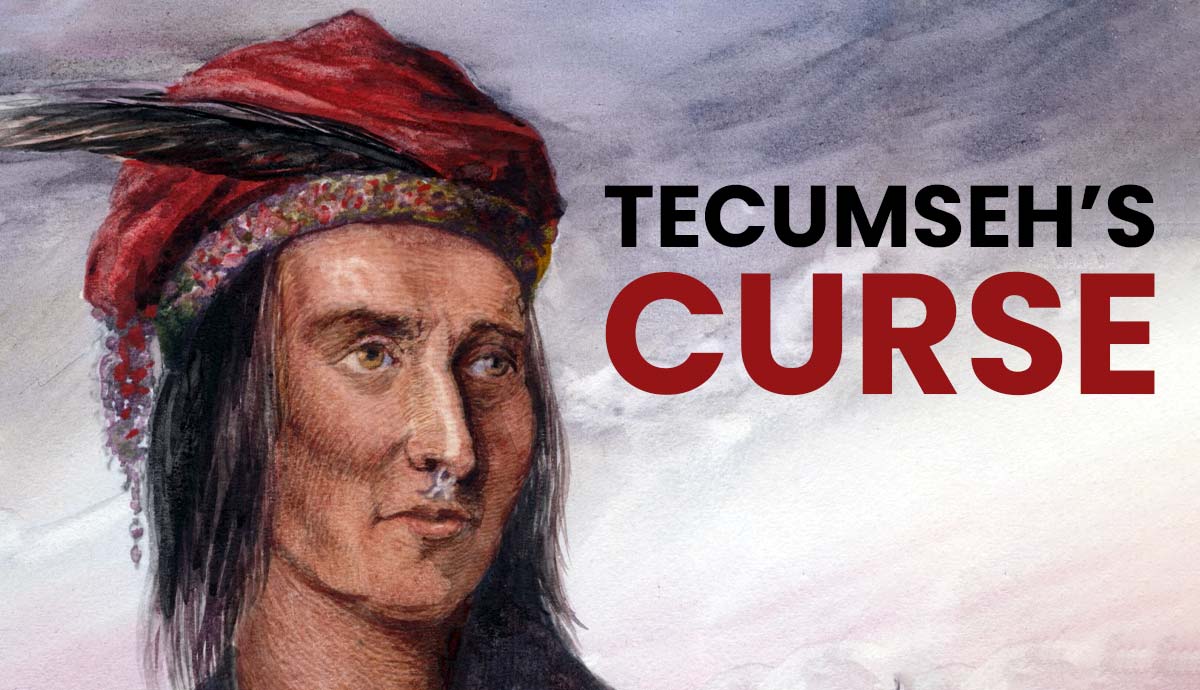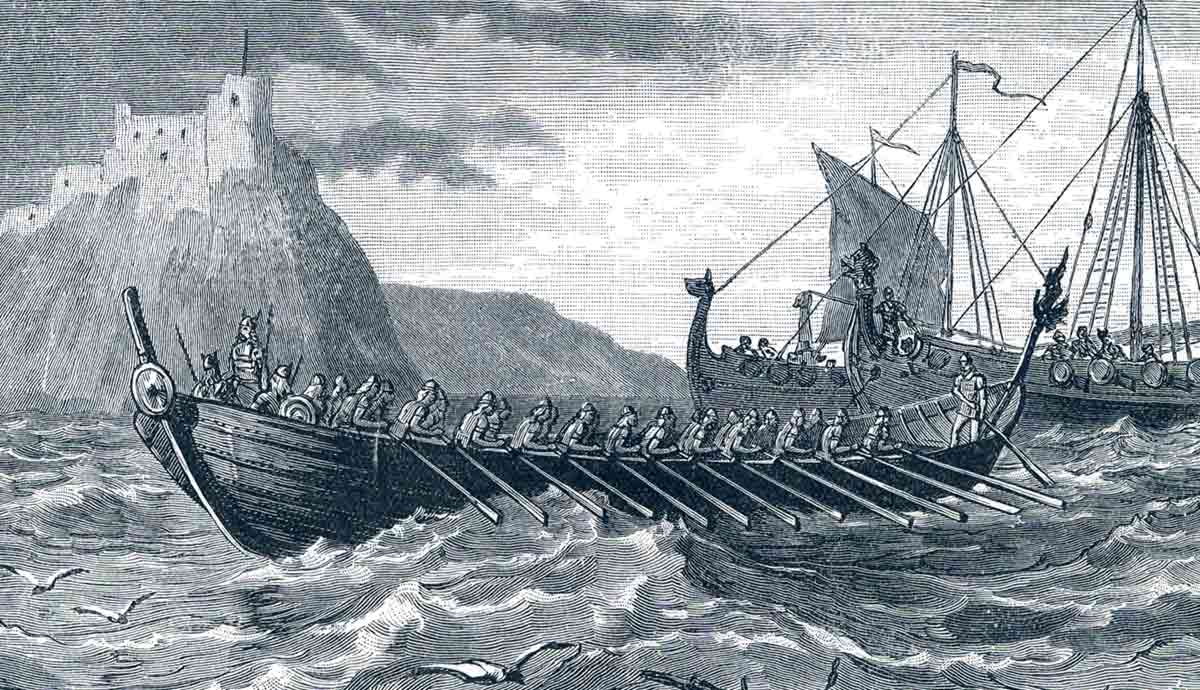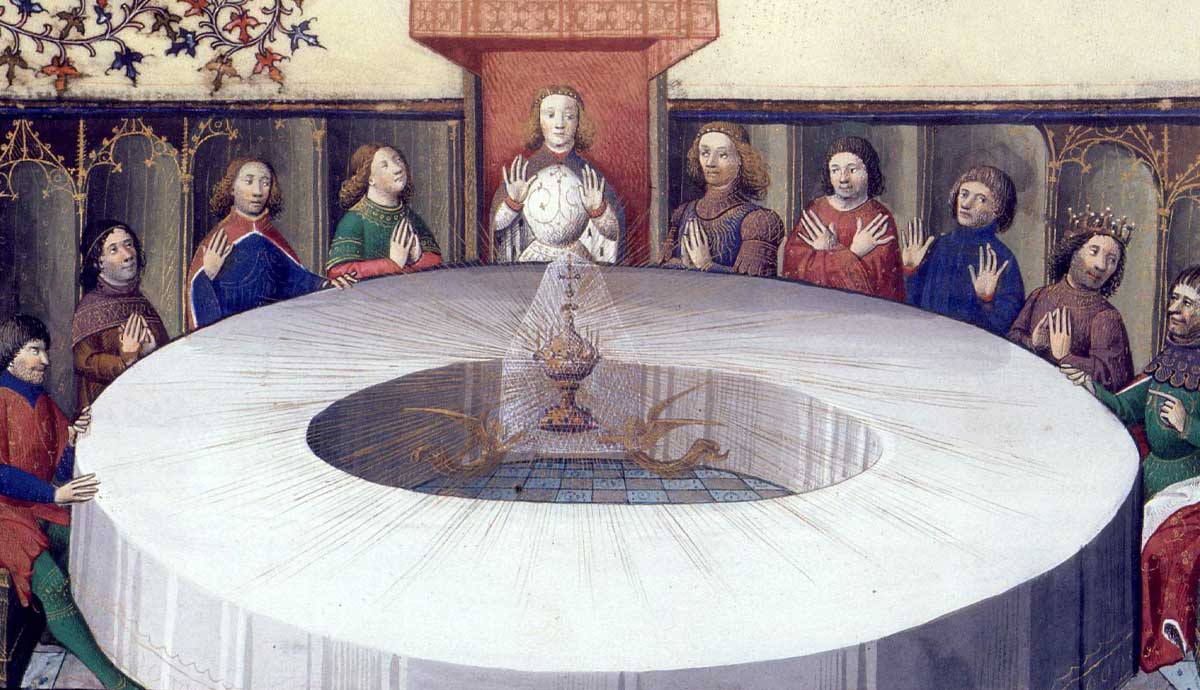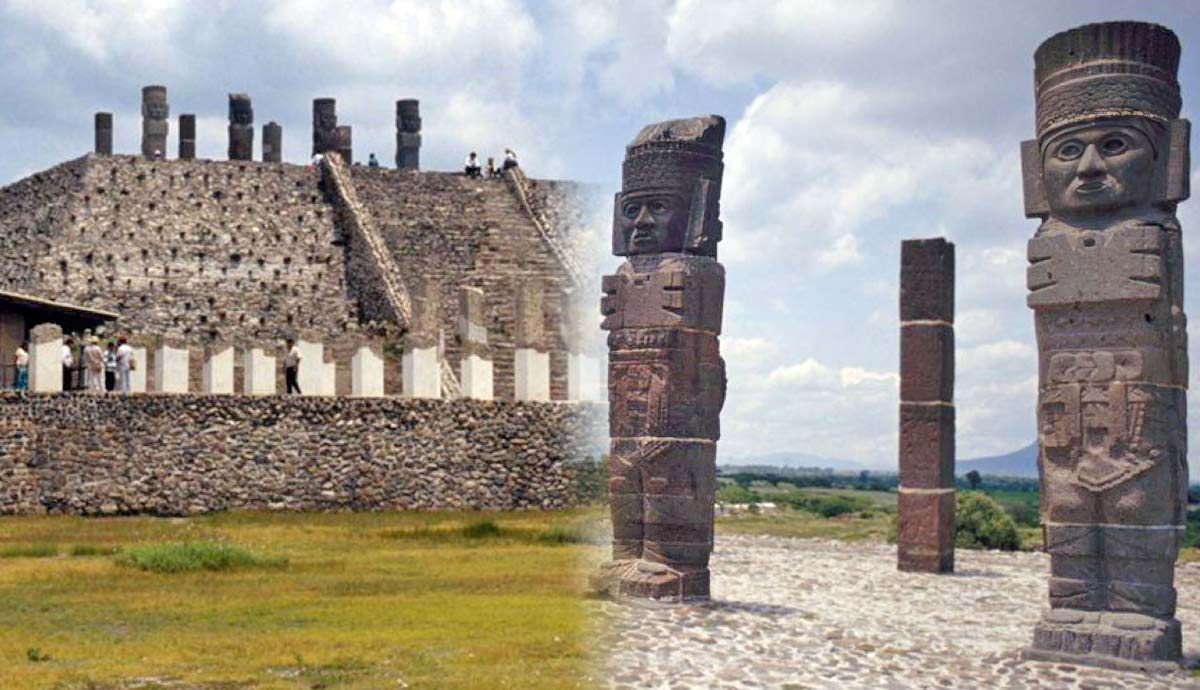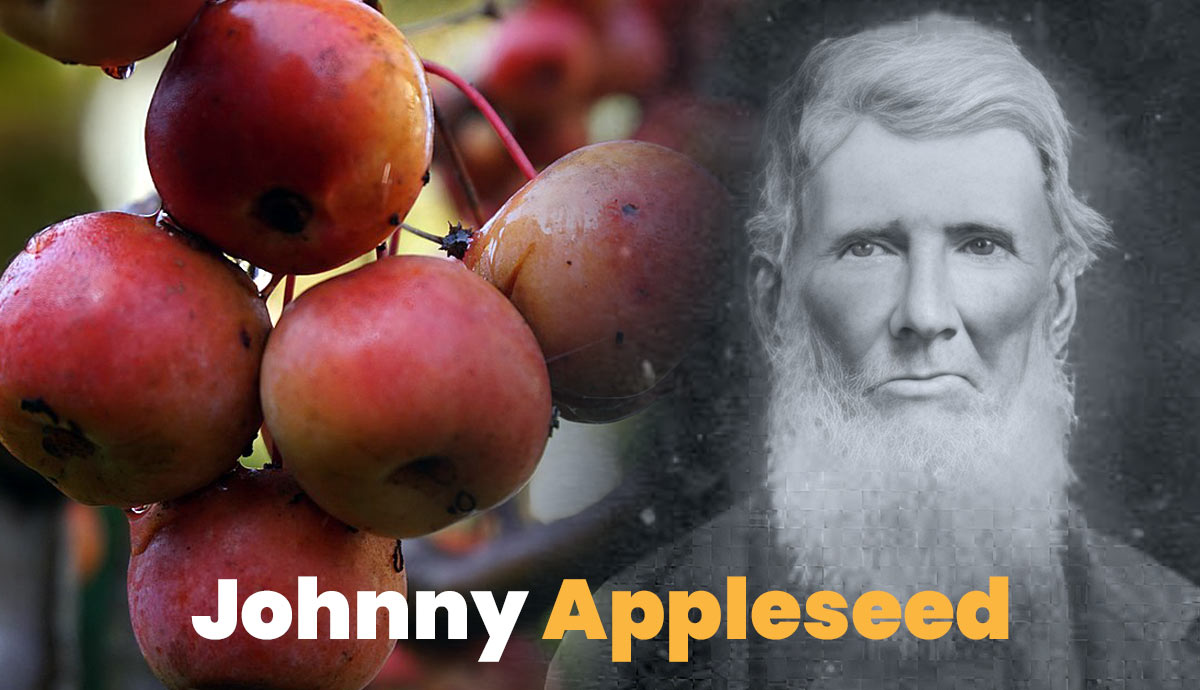
Few American legends are as widely known as the story of Johnny Appleseed. But as with many tales of Americana, it can be hard to separate fact from fiction. While Johnny was a real person, his moniker of “Appleseed” was not his actual last name but a nickname given to him for his dedication to apples and their symbolic importance. In reality, John Chapman was a missionary and orchardist who had a reputation for kindness. How did his legend grow so widely, and what is the truth behind his adventures?
1. Johnny Appleseed’s Real Name Was John Chapman

John Chapman was born in Leominster, Massachusetts, in 1774, as the Revolutionary War was dawning. He was one of four children. His mother died from tuberculosis when he was a child, and his father remarried. The Chapman parents would go on to have ten more children, including a son named Nathaniel, who was especially close to John. Their home was a Christian one, but little else is known of Chapman’s early life.
2. Chapman Was an Eccentric Dresser

As a young adult, Chapman began traveling west (in what is now considered the midwestern United States), often in the company of his younger brother Nathaniel. He interacted and visited with many settlers in these young areas of the new United States and was a welcome visitor to many. His hosts often noted his strange manner of dress. He sometimes traded apple seeds or saplings for hand-me-down clothing with settlers who couldn’t afford to purchase his goods outright. However, he often donated these items to others in need and was content to wear coffee sacks with holes cut for his arms and head. Stories tell of him wearing a hat made from a saucepan or tin can.
Chapman was known to travel barefoot most of the time, even in cold weather. The soles of his feet became so tough that he could stick a needle in them without any sort of pain reaction. This was, in fact, a trick he used to entertain children on his journeys.
3. Johnny Appleseed Was a Man of Faith

Raised in a pious household, Chapman’s faith developed into a cornerstone for his life. According to biographers, it was the “core of his being.” Raised a Christian Congregationalist, he was fluent in biblical teachings and enjoyed telling Bible stories to people of all ages whom he met on his travels across the Midwest. He later became interested in the teachings of a man named Emanuel Swedenborg. This interest led him to join the Church of New Jerusalem, or Swedenborgian church, based on the teachings of the theologian Swedenborg. These teachings often directly contrasted with the popular religions of young America, which emphasized fire and brimstone.
Swedenborg’s interpretations were those of a more loving and understanding higher power. Chapman also enjoyed impulsive sermons and was a zealous speaker. News of his ministering even reached the Swedenborg Society, headquartered in Manchester, England, and they noted an account of his deeds in 1817. Swedenborgian teachings emphasized service and united this importance with faith itself. This appears to have agreed perfectly with Chapman’s dedication to God and generous nature.
4. He Was Known as a Generous Man, But He Was Also a Successful Businessman

While Chapman was known for his generosity and kindness, he was also an astute man when it came to financial and business matters. Though he lived a bare-bones lifestyle, he made a fortune on his apple trees. Chapman understood the direction of frontier expansion and planted orchards in many unsettled areas that were soon to be invaded by pioneers. These orchards often secured his claim to the land and added value to the properties. Eager settlers were more than happy to purchase Chapman’s land parcels or his young trees.
Cider and Applejack, a type of brandy, were two important drinks at the time, and quality liquor could even be used as currency. Purchasing land with an existing orchard gave a settler the opportunity to capitalize without waiting years for the trees to become established. When he died, Johnny Appleseed himself still owned more than 1,200 acres of established land in the states of Pennsylvania, Ohio, and Indiana, which was left to his family.
5. He Got His Nickname Because He Carried Apple Seeds

From the time he first started traveling, Chapman collected seeds for free from cider mills, where apples were pressed to extract the juices. He is often depicted in art as carrying a leather bag in which he stored his seeds. Legends tell stories of Chapman spreading these seeds far and wide to improve the environment as he traveled. While he may have done this occasionally and shared his seeds, he instead focused on using this plant material to create his pioneer nurseries. He planted his seeds with care, selecting suitable planting spots and fencing in the area to prevent wildlife and livestock from interfering with the growth of his trees. He returned to these areas periodically to maintain his investment. His first nickname was actually “apple seed man,” which later evolved into the historic “Johnny Appleseed.”
6. Chapman Was an Animal Lover

The term “wouldn’t hurt a fly” definitely applies to John Chapman, who was known to put out a campfire for fear of harming the local mosquitos. Chapman was a vegetarian and lover of all animals, from the smallest to the largest. He was said to rescue animals from traps and nurse them back to health if needed. He used some of his income from his orchards to purchase mistreated livestock and rehome them with kinder caregivers.
However, there is one occasion on which Chapman acted hastily with regard to an animal. When a rattlesnake bit him, he retaliated with his scythe in anger, killing the animal. His account of the event was published after his death in 1871 in Harper’s Monthly, in which Chapman was quoted as calling the snake a “poor fellow.”
7. He Can Be Credited With Helping Apples Flourish in America

By planting his trees using seeds, rather than the more popular propagation method of grafting, in which the new trees are a genetic copy of a single parent tree, Chapman promoted the development of several new varieties of apples. Though grafting was common in his time (and is still widely used in the fruit industry today), Chapman felt it was unnatural and stated that “God only can improve the apple.” Planting apples by seed allowed the plants to adapt and develop resistances to changes in their environment. Some of today’s favorite apple cultivars descend from Chapman’s trees.

Despite Chapman’s genetic contributions, the apples he planted and maintained were not the uniform, sweet fruits that are enjoyed in grocery stores today. His trees produced “spitters,” which were not for fresh eating but better suited to the creation of hard cider and apple brandy. Not only could these commodities be used to give settlers purchasing power, but they also provided them the means to create their own beverage. Water sources were often unreliable, particularly when settlers were entering a new area, and a liquor drink was often the safest choice when it came to consuming liquids. Making the drinks was a relatively simple process, utilizing wild yeasts, and one did not need to be an expert to be successful. Applejack could reach up to 66 proof and wouldn’t freeze in the winter.
8. Chapman Died Trying to Save One of His Orchards

In March of 1845, Chapman received notice that a fence protecting one of his orchards in Indiana had been compromised, and cattle had invaded the trees. He left for the orchard immediately, determined to protect his young trees from the hungry animals and their damaging hooves. Unfortunately, the weather didn’t cooperate with his intentions, and a snowstorm was in his path. Nevertheless, Chapman pressed on. While stopping to rest on his journey, he developed pneumonia, which would lead to his death a few days later. Chapman died at age 71 on March 18, 1845. His final resting place is unknown, but memorials to his legacy exist in several locations across the US, including Massachusetts, Pennsylvania, Ohio, and Indiana.
His legend began to truly develop decades after his death when an account of his life was published in Harper’s New Monthly Magazine. Since then, poetry, fiction, movies, songs, and books have further idolized this frontier legend. Many modern Americans were first introduced to Appleseed in a Disney cartoon, a short called Melody Time, that first premiered in 1948. The charming title character is dressed in colonial garb, wears a pot on his head, and spreads his apple seeds far and wide, leading to the growth of beautiful, delicious apples. Though largely fiction, the cartoon did capture Chapman’s light-hearted attitude and religious nature and contributed greatly to the ongoing mythical appeal of his life.
9. Appleseed’s Legacy Lives On

John Chapman’s great, great, great, great nephew, who shares his name, maintains a number of small apple orchards in Maine, including trees that are descended from his ancestor’s seeds. Chapman continues the public outreach work that his uncle started, including donating trees.
Chapman resides in Athens, Maine. A veteran of the US Navy and a former millwright, he is also a reptile enthusiast and expert. As a man of faith like his forebear, one of his lifetime goals is to plant some of his ancestors’ trees in Israel.
